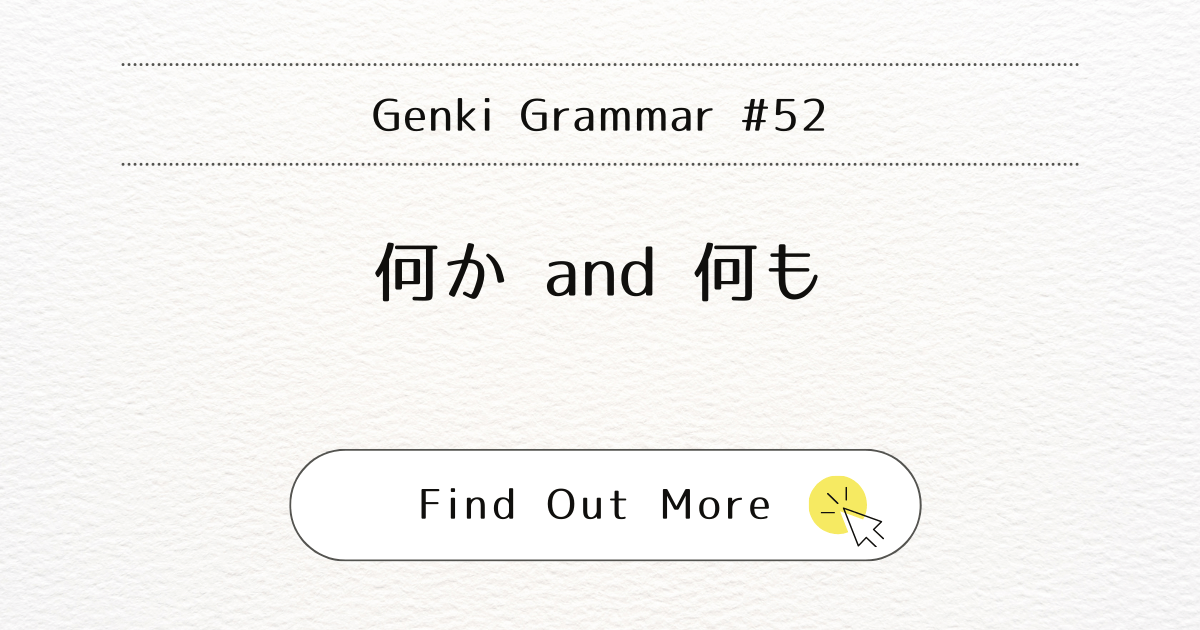
Introduction
In this blog post, we will learn how to use 何か (nanika) and 何も (nanimo) in Japanese. These words help you talk about “something” and “anything” in both positive and negative sentences. This is a useful structure for everyday conversation.
What It Means
The word for “something” is 何か (nanika), and the word for “anything” in negative sentences is 何も (nanimo).
When You Use It
Use 何か (nanika) when you want to say “something” in positive statements or ask “anything?” in questions. Use 何も (nanimo) when you want to say “anything” in negative sentences.
Examples
- 犬が何か持ってきました。
(Inu ga nanika mottekimashita.) – The dog has brought something. - 犬は何か食べましたか。
(Inu wa nanika tabemashita ka.) – Did the dog eat anything? - いいえ、犬は何も食べませんでした。
(Iie, inu wa nanimo tabemasen deshita.) – No, the dog did not eat anything.
Note
When 何か (nanika) and 何も (nanimo) are used where the particles は, が, and を are expected, they can often be used on their own without particles. We will learn in a later post what to do when particles other than these are expected.
Conclusion
Using 何か (nanika) and 何も (nanimo) is essential for making statements and asking questions about “something” or “anything” in Japanese. Practice these structures to enhance your conversation skills.



